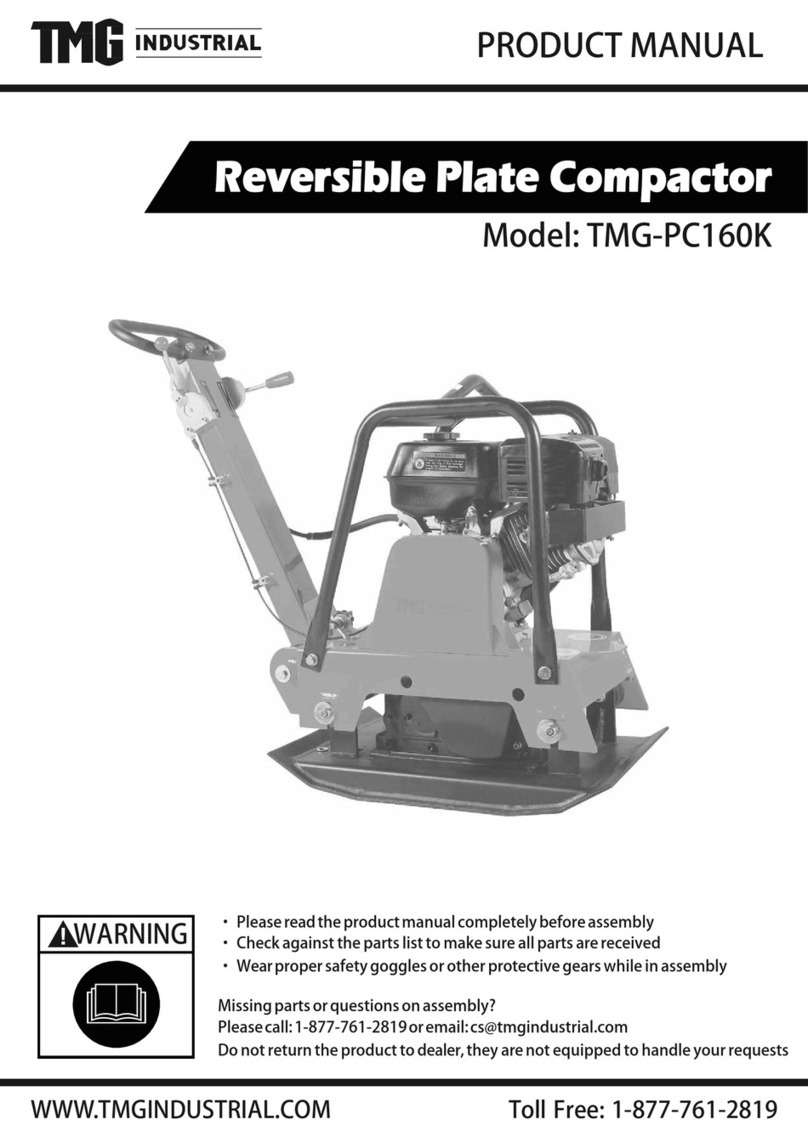
3
Table of Contents
1. Safety Information
1.1 Laws Pertaining to Spark Arresters
1.2 Operating Safety
1.3 Operator Safety while using Gasoline Engines
1.4 Service Safety
4
5
5
6
6
----------------------------------------------------------------------------
-----------------------------------------------------------------
----------------------------------------------------------------------------------------
-------------------------------------------------
-------------------------------------------------------------------------------------------
2. Technical Data
2.1 Machine Data
2.2 Engine Data
7
7
8
------------------------------------------------------------------------------------
----------------------------------------------------------------------------------------------
-------------------------------------------------------------------------------------------
5. Maintenance
5.1 Periodic Maintenance Schedule
5.2 Transportation
5.3 Spark Plug
5.4 Air Filter
5.5 Storage
17
17
18
18
19
19
-------------------------------------------------------------------
-------------------------------------------------------------------------------------------------
-----------------------------------------------------------------------------------------
-------------------------------------------------------------------------------------------------
-------------------------------------------------------------------------------------------------
-----------------------------------------------------------------------------------------
4. Operation
4.1 Application
4.2 Structure
4.3 Before Starting
4.4 To Start
4.5 Operation
4.6 To Stop
14
14
14
14
15
15
16
----------------------------------------------------------------------------------------------
--------------------------------------------------------------------------------------------------
--------------------------------------------------------------------------------------------------
--------------------------------------------------------------------------------------------
-----------------------------------------------------------------------------------------------
-----------------------------------------------------------------------------------------------------
-----------------------------------------------------------------------------------------
3. Labeling
3.1 Labeling Locations
9
9
------------------------------------------------------------------------------------------------
------------------------------------------------------------------------------------
3.2 Safety Labels 10
-------------------------------------------------------------------------------------------
3.3 Operating Labels 12
----------------------------------------------------------------------------------------
6. Troubleshooting
6.1 Rammer Troubleshooting
6.2 Engine Troubleshooting
20
20
21
------------------------------------------------------------------------
----------------------------------------------------------------------------------
-------------------------------------------------------------------------------
7. Equipment Size 23----------------------------------------------------------------------------------
8. Warranty 24------------------------------------------------------------------------------------------------
9. Maintenance Record 25--------------------------------------------------------------------------
10. Compaction Tips 26-------------------------------------------------------------------------------
11. Parts Manual 29-------------------------------------------------------------------------------------
12. Accessories, Coupons, & More 36----------------------------------------------------





























